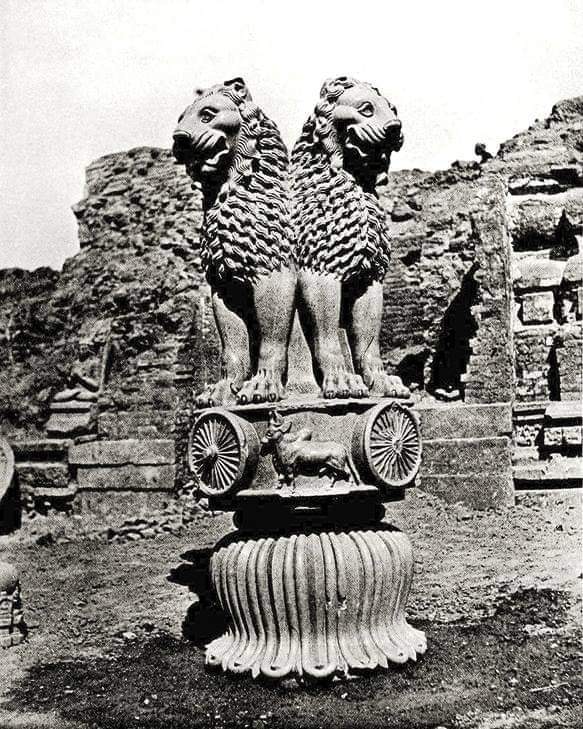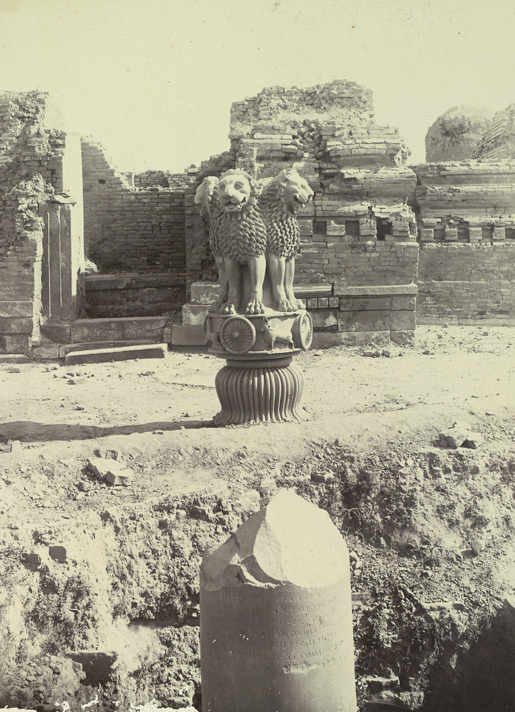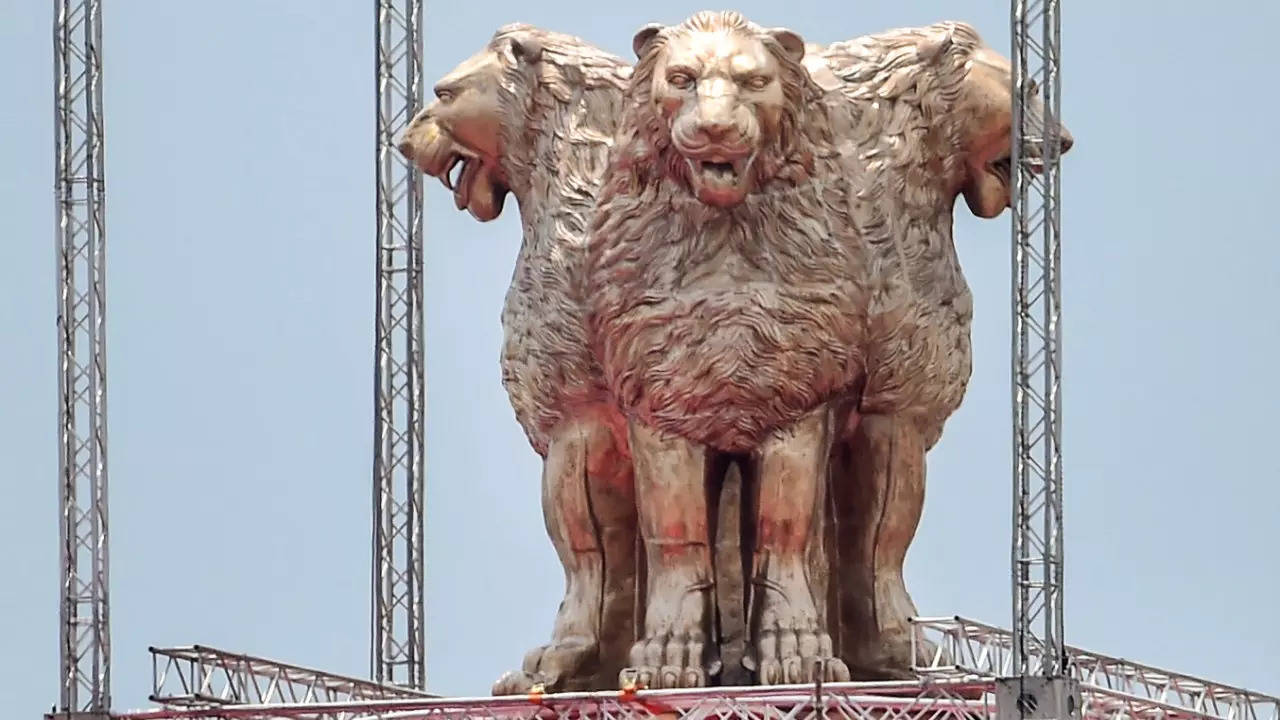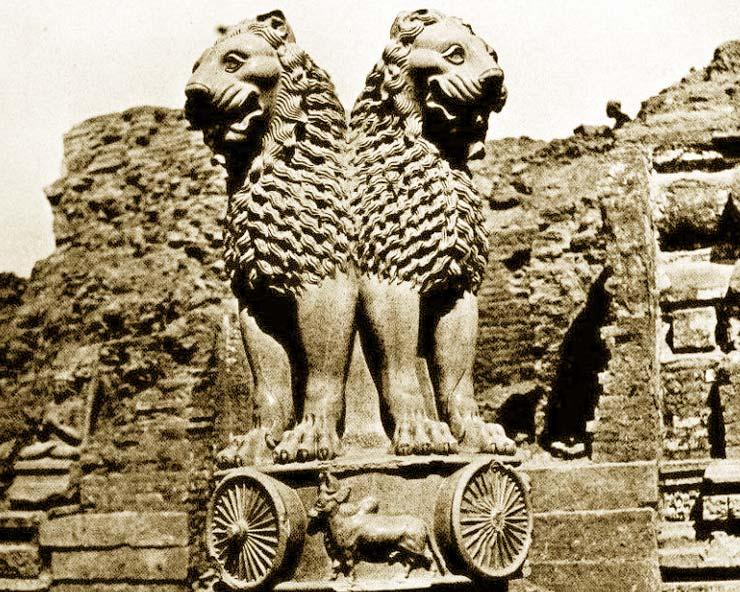The Lion Capital of Ashoka is one of the most renowned symbols of ancient India, embodying the rich cultural and historical legacy of the Mauryan Empire. Constructed by Emperor Ashoka around 250 BCE in Sarnath, India, this magnificent sculpture marks the location where Gautama Buddha delivered his first sermon, a pivotal moment in Buddhist history. This article explores the origins, symbolism, and lasting significance of the Lion Capital, following its journey from antiquity to its esteemed position in contemporary India.
The Origin and Structure of the Lion Capital

Originally, the Lion Capital of Ashoka served as the crowning element of a grand column built by Emperor Ashoka after his conversion to Buddhism. This extraordinary structure, hewn from a single block of highly polished sandstone, stands at 2.1 meters (7 feet) tall. Atop the capital are four life-sized lions, positioned back-to-back, representing strength, courage, and sovereignty. These lions rest on a drum-shaped abacus, intricately carved with reliefs of wheels and illustrations of four animals—a lion, an elephant, a bull, and a galloping horse—each symbolizing various facets of Buddhist belief and Ashoka’s reign. Below the abacus is a bell-shaped lotus, further reinforcing the Buddhist symbolism.
The entire assembly was affixed to its solid column using a metal dowel, showcasing the advanced craftsmanship of that era. The Lion Capital was not just an architectural wonder but also a representation of Ashoka’s commitment to disseminating Buddhist teachings throughout his empire.
The Rediscovery of the Lion Capital

As time passed, the Lion Capital fell into obscurity, eventually collapsing and becoming buried beneath layers of soil. It remained hidden until the early 20th century when it was unearthed by the Archaeological Survey of India (ASI) under F. O. Oertel’s supervision during the winter of 1904-1905. Although the column itself had fractured before being buried, the Lion Capital was found in relatively good condition, albeit with some damage. Notably, cracks were observed around the neck just above the lotus, and two lions had suffered injuries to their heads. Today, this majestic sculpture is housed in the Sarnath Museum near its original location.
Symbolism and Significance

The Lion Capital of Ashoka is rich in symbolism, reflecting both Buddhist and secular themes. As one of the earliest significant stone sculptures to emerge in South Asia after the decline of the Indus Valley Civilization, it heralded a revival of monumental art in the region. The sudden appearance of such sophisticated stone carvings has led some scholars to speculate about the influence of Persian stonemasons from the Achaemenid Empire, whose naturalistic carving techniques may have inspired Indian artisans. Others propose that transitioning from wood and copper to stone was a natural evolution during a time of rapid technological and cultural exchange.
Beyond its artistic merit, the Lion Capital carries deep symbolic meaning. The four lions represent Ashoka’s dedication to promoting Buddhism throughout his realm, while the wheels, known as Dharma Chakras, symbolize the eternal cycle of life, death, and rebirth—a fundamental principle in Buddhist philosophy. The animals on the abacus—the lion, elephant, bull, and horse—are thought to represent different stages of Buddha’s life or signify the four cardinal directions, highlighting the universal nature of his teachings.
The Lion Capital in Modern India

The Lion Capital’s enduring legacy was firmly established in 1947, just before India gained independence when Jawaharlal Nehru, then interim Prime Minister, proposed that the wheel on the abacus be adopted as the design for the wheel in India’s new national flag. Moreover, the Lion Capital itself, excluding the lotus base, was selected as India’s official state emblem. This emblem continues to grace government documents, currency, and official seals, serving as a powerful reminder of India’s rich historical and cultural legacy.
Historical Context and the Legacy of Sarnath

Sarnath, where the Lion Capital was originally erected, has a rich history particularly associated with Buddhism. It is notable as the site where Buddha delivered his first sermon, marking the inception of the Buddhist Sangha. Over centuries, Sarnath attracted numerous visitors and scholars, including Chinese pilgrims Xuanzang and Faxian, who recorded their experiences in early centuries CE. Although these accounts were composed long after the events they describe, they offer valuable insights into the historical and religious importance of the site.
Despite Buddhism’s decline in India after the 12th century, Sarnath remained a significant pilgrimage site for travelers from Tibet, Burma, and Southeast Asia. However, by the late 19th century, it had fallen into neglect with many bricks repurposed for other constructions. The rediscovery and excavation of the Lion Capital along with other artifacts at Sarnath in the early 20th century revitalized interest in this historically significant site.
Conclusion
The Lion Capital of Ashoka is more than just an ancient sculpture; it symbolizes India’s rich cultural heritage and reflects Emperor Ashoka’s enduring legacy. From its origins as a crowning feature on a monumental column to its role as an emblem of modern India, the Lion Capital continues to inspire and remind us of the profound cultural and spiritual traditions that have shaped the Indian subcontinent. Today it stands not only as a remnant of a glorious past but also as a beacon of ideals such as peace, unity, and rule of law that continue to guide India as a nation.

